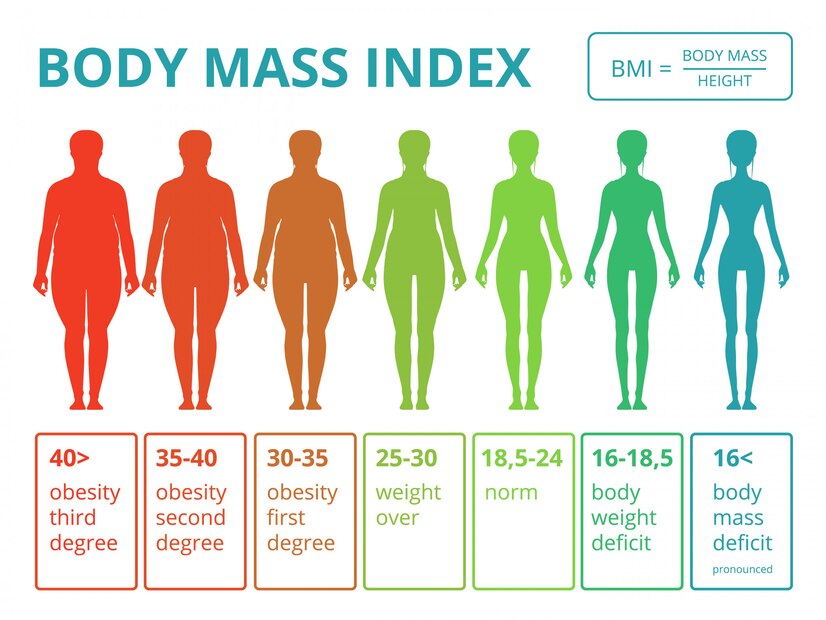Is it time to leave the Body Mass Index (BMI)?
DOI:
https://doi.org/10.18041/2665-427X/ijeph.1.3877Keywords:
BMI, Accuracy, Validity, Skewness, Maximum likelihood ratio, ROCAbstract
Background: This study was conducted to assess the accuracy when calculating the nutritional status using
the new Body Mass Index formula (BMI), taking as Gold Standard the traditional BMI.
Methods: The diagnostic accuracy compared the new BMI formula to the traditional BMI. Accuracy analysis included sensitivity, specificity, and predictive values (positive and negative), Youden index, Kappa index, ROC, and maximum likelihood ratio.
Results: The new BMI formula yielded good results for all indicators used for measuring the accuracy, in all groups. These results are a good evidence that the new BMI formula could replace the traditional BMI for screening population based nutritional status. However, the new BMI formula detected less subjects in subnormal, normal, and overweight groups; and, more in the obese group. The distribution is
biased to the right in both formulas. In overweight and obese groups, the skewness is bigger in the new formula than the original formula; being the skewness 5.91 and 4.81; and 30.9 and 30.3, respectively.
Conclusion: Although the results are good evidence that new BMI formula yields similar results to the BMI formula for screening nutritional status at population level, and therefore, could be used interchangeably. Both formulas lack some validity in measuring the obese nutritional status, which do not allow recommending either of these formulas, due to the large dispersion of both formulas.
Downloads
References
1. Quetelet A. Recherches sur le poids de l’homme aux différens ages. Nouv Mem l’Academie R Des Sci B-Lett Bruxelles. 1832; 7: 1‐43.
2. Keys A, Karvonen N, Kimura N, Taylor HL. Indices of relative weight and obesity. J Chronic Dis. 1972; 25:329–3. Int J Epidemiol, 2014; doi:10.1093/ije/dyu058.
3. Garrow JS, Webster J. Quetelet’s Index (W/H2) as a Measure of Fatness. Internat J Obesity. 1985; 9:147–153.
4. Vandevijvere S, Chow CC, Hall KD, Umalia E, Swinburna BA. Increased food energy supply as a major driver of the obesity epidemic: a global analysis. Bull World Health Organ. 2015; 93:446–456.
5. Kleinert S, Horton R. Rethinking and reframing obesity. Lancet. 2015; 385: 2326-2328.
6. OMS. Informe sobre la situación mundial de las enfermedades no transmisibles. 2010. Resumen de orientación. Ginebra: OMS; 2011.
7. Thorpe KE, Florence CS, Howard DH, Joski P. The impact of obesity on rising medical spending. Healtj. Aff (Millwood). 2004; Suppl Web Exclusives: W4-480–6,
8. House of Commons Health Committee. Obesity. Third Report of Session 2003–04. Volume I Report, together with formal minutes. London; 2004.
9. Allender S, Rayner M. The burden of overweight and obesity related ill health in the UK,” Obes Rev. 8(5): 467–73, 2007.
10. Dee A, Kearns K, O’Neill C, Sharp L, Staines A, O’Dwyer V, et al. The direct and indirect costs of both overweight and obesity: a systematic review. BMC Res Notes. 2014; 7: 242.
11. Dobbs R, Sawers C, Thompson F, Manyika J, Woetzel J, Child P, et al. Overcoming obesity: an initial economic assessment. A discussion paper. McKinsey Global Institute; 2014. Available from: https://www.mckinsey.com/~/media/McKinsey/Business%20Functions/Economic%20Studies%20TEMP/Our%20Insights/How%20the%20world%20could%20better%20fight%20obesity/MGI_Overcoming_obesity_Full_report.ashx (accessed July 29,2018).
12. Trefethen N. BMI is flawed. Professor of numerical analysis. University of Oxford. Letter to the Economist. January 5, 2013.
13. Fletcher RW, Fletcher SW. Clinical Epidemiology: The essential. Four edition. Lippincott Williams & Wilkins; 2005.
14. Gordis L. Epidemiologia. 3er edición. Elsevier: España. Madrid; 2005.
15. Oliveira AG. Biostatistics Decoded. John Wiley & Sons; 2013.
16. Statistical Analysis Software. SAS/STAT Software. Avalaible from: https://www.sas.com/en_us/software/stat.html.
17. IBM SPSS. Statistics software, version 24.0. SPSS Incorporated IBM Company. Chicago, Illinois. United States.
18. Flegal KM, Kit BK, Orpana H, Graubard BI. Association of allcause mortality with overweight and obesity using standard body mass index categories: a systematic review and meta-analysis. JAMA. 2013; 309: 71–82.
19. Yi SW, Ohrr H, Shin SA, Yi JJ. Sex-age-specific association of body mass index with all-cause mortality among 12, 8 million Korean adults: a prospective cohort study. Int J Epidemiol. 2015; 44: 1696–705.
20. Smith GD, Ebrahim S. Mendelian randomization: can genetic epidemiology contribute to understanding environmental determinants of disease? Int J Epidemiol. 2003; 32: 1–22.
21. Zajacova A, Ailshire J. Body mass trajectories and mortality among older adults: a joint growth mixture-discrete-time survival analysis. Gerontologist. 2014; 54: 221–31.
22. Twig G, Yaniv G, Levine H, Leiba A, Goldberger N, Derazne E, et al. Body-mass index in 23 million adolescents and cardiovascular death in adulthood. N Engl J Med. 2016; 374: 2430–40.
23. Berrigan D, Troiano RP, Graubard BI. BMI and mortality: the limits of epidemiological evidence. Lancet. 2016; 388: 734-6.

Published
Versions
- 2018-05-30 (4)
- 2021-06-21 (3)
- 2021-06-21 (2)
- 2018-11-07 (1)
Issue
Section
License
Copyright (c) 2018 Interdisciplinary Journal of Epidemiology and Public Health

This work is licensed under a Creative Commons Attribution-NonCommercial-NoDerivatives 4.0 International License.

